The one that isn't is this one. Its not a tutorial but then it could be seen as a tutorial. It shows you how I did a caricature, or the process I went through to color it.
It's not about how to do a caricature as to be honest, I don't know how I do it; To be absolutely and brutally honest, I just look at peoples' faces and think: Big nose, fat lips, big ears, weird hair, etc. But if you do glean anything from this piece then it will be---for you at least---a tutorial. If you can also understand any of the above drivel then please award yourself a beverage of your choice and sit back and enjoy the nice free pretty pictures from a blog post I called 'Colouring the Caricature'
Pretty uninspiring I know but it was 1:30 in the morning and I was very tired.
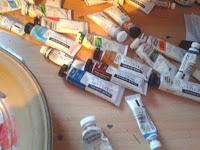

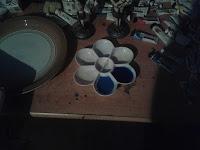
1.First thing your going to need is watercolours...lots of them (well it is a watercolour picture and if you were thinking of bringing oils, well quite frankly you're probably enough of a worry to your family and shouldn't be allowed objects that you could poke yourself in the eye with)
I use Windsor and Newton Gouache and water color tubes and daylon brushes. The mixing dishes below are for the large background washes
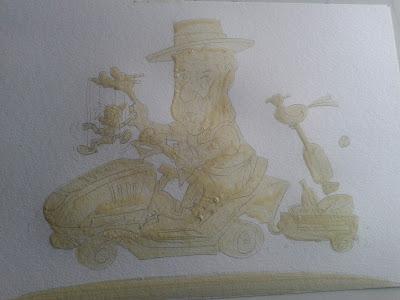
2. Now I add the rubber based masking fluid to the images. I do this as I still can't be trusted to paint around the lines. That and the fact that the next stage is to wet the whole page with a natural artist sponge (not to be confused with the one you use in the bath for your hands knees and private bits)
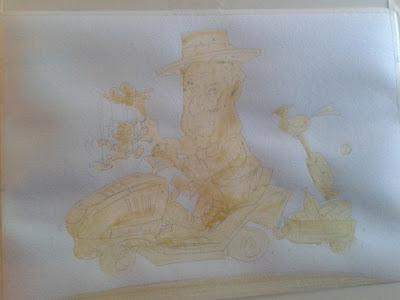
3. The reason why I dampen the paper is when I place the background layer---in this case blue--- its covers the page a lot more evenly and you can get some pretty terrific gradient effects...not that I used any here, but take my word for it, you can
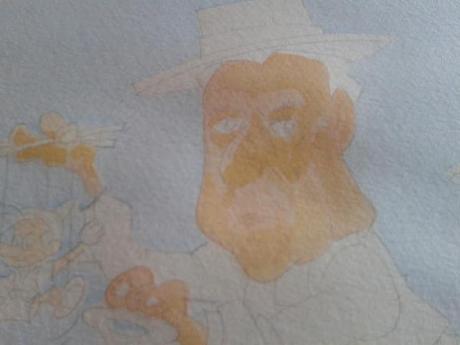
4. When the background is well and truly dry, peel off the masking fluid.
From here I usually work on the face as this is the obvious focal point. I start with a basic flesh and build up the layers; in this case I used Naples Yellow and darkened it with a bit of blue and red mix for a nice shade of wine.
*A good point. When producing shadows, most people just use a darker version of the color they are using, but a top tip is this: Mix a nice wash of ultramarine blue and red to make a soft wine pigment and place this over any color you care to name and it will automatically look like the shade of that color. Its an amazing fact and the chameleon like qualities of these two colours never ceases to amaze me.
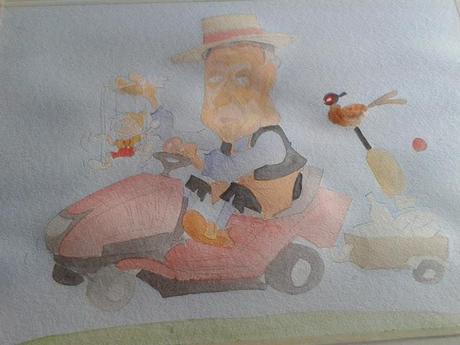
5. After working on the flesh I normally put a base wash of all the colours I'm going to use. This gives me a good look and sense of color balance.
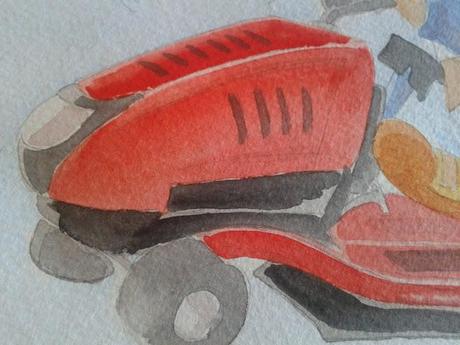 6. Having laid down the washes I begin to build up the layers. Always decide where the light is coming from at the very beginning of the painting and adhere to it with every color you lay down.
6. Having laid down the washes I begin to build up the layers. Always decide where the light is coming from at the very beginning of the painting and adhere to it with every color you lay down.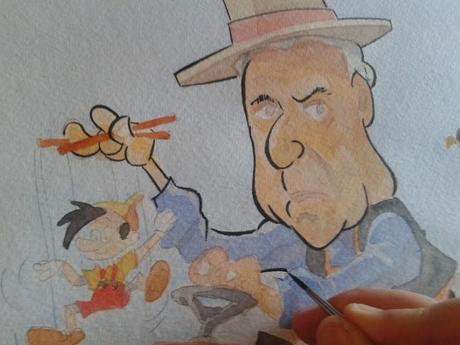 7. Once all the shading is completed and the paint fully dry, I go around the outer edges of the character only with a No.1 Brush. I do this because when I go in later with the much thinner dip pen, there will be a noticeable contrast in the lines and this gives the final picture a pleasing effect.
7. Once all the shading is completed and the paint fully dry, I go around the outer edges of the character only with a No.1 Brush. I do this because when I go in later with the much thinner dip pen, there will be a noticeable contrast in the lines and this gives the final picture a pleasing effect.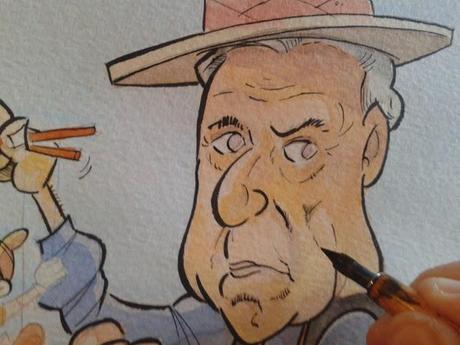
8. The point I made above should now be very obvious, as I render the rest of the painting with my Gelliot 303 nib and Windsor and Newton Black India Ink.
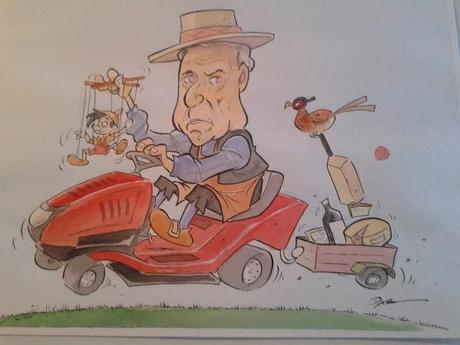
9. I then sign it, remove the masking tape and the caricature is now completed.
Hope you liked this behinds the scenes look into my working methods. If you did, come back for more, and don't forget to come back tomorrow for the video tutorial on how to draw a cartoon vulture.
If you like my blog and the things that I say and do, please tell your friends, mention me on Facebook, Twitter and any of the other fine social media networking sites. I would love to have my work reach a much larger audience and although I could get there on my own, I'll get there a lot quicker with your help, so please, please spread the word.
Thank you
Karl
